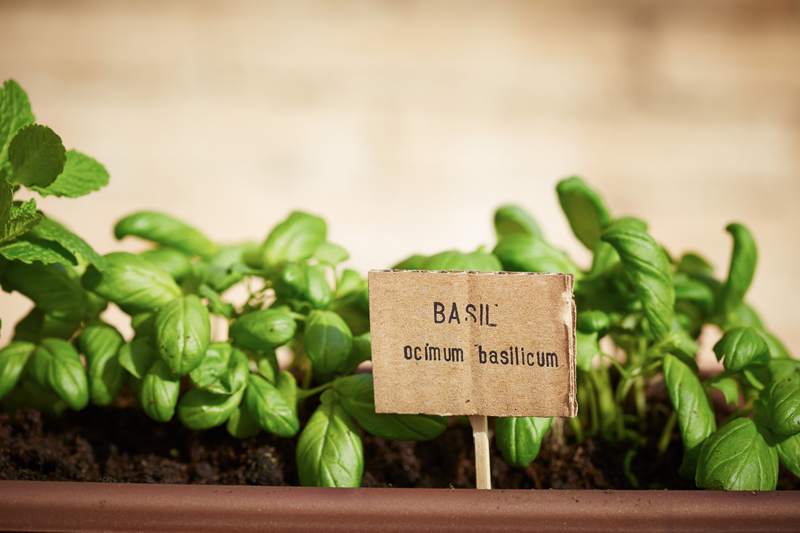Strategies to Secure Your Garden Against Severe Weather
Posted on 05/09/2025
Strategies to Secure Your Garden Against Severe Weather
Gardeners devote time, energy, and resources to cultivating thriving outdoor spaces. However, the unpredictable nature of severe weather--whether it's torrential rain, gale-force winds, hail, or extreme heat--poses a significant threat to even the most meticulously maintained gardens. Understanding strategies to secure your garden against severe weather ensures your plants, structures, and soil remain safe all year round. In this article, we'll explore comprehensive, actionable, and proven methods to protect your garden through every season.
Why Securing Your Garden Against Severe Weather Matters
The damaging impact of extreme weather events is increasing due to climate change. From droughts and floods to hurricanes and cold snaps, these events can destroy plants, erode soil, damage infrastructure, and set back years of growth in mere hours. Implementing effective garden weather protection is about more than just saving plants--it's about preserving investments, local biodiversity, and the beauty of your environment.
Typical Weather Threats to Gardens
- Heavy Rain and Flooding
- High Winds and Storms
- Frost and Freezing Temperatures
- Extremely High Temperatures and Drought
- Hailstorms

Assessing Your Garden's Vulnerabilities
Before implementing preventative strategies, it's vital to assess your garden's specific vulnerabilities. Factors to consider include:
- Location and Elevation: Low-lying gardens may flood easily; hilltops are wind-prone.
- Soil Type and Drainage: Heavy clay retains water; sandy soil drains quickly.
- Existing Structures: Fences, sheds, and greenhouses may need reinforcement.
- Types of Plants: Delicate and exotic plants are usually less weather-hardy.
With these vulnerabilities in mind, let's move on to robust severe weather garden protection strategies tailored for each threat.
Strategies for Protecting Your Garden From Heavy Rain and Flooding
1. Improve Soil Drainage
- Amend Soil: Incorporate organic matter, compost, and sand to promote water flow.
- Raise Beds: Raised garden beds elevate plant roots above flood-prone ground.
- Install Drainage Solutions: Use French drains, gravel trenches, or sump pits to direct water away.
2. Protect Plant Roots and Structures
- Mulching: Add thick mulch layers around plants to prevent soil erosion and minimize water impact.
- Planting Groundcovers: Low-lying plants stabilize soil and absorb excess rainfall.
- Root Collars: Wrap plant bases with burlap or horticultural fleece for extra defense during storms.
3. Divert Water Flow
- Swales and Berms: Shape the landscape with shallow ditches (swales) and raised ridges (berms) to redirect water.
- Rain Gardens: Designate a low-lying planting area to temporarily collect and absorb excess rainwater.
Shielding Your Garden Against High Winds and Fierce Storms
1. Windbreak Design and Planting
- Hedges and Shrubs: Dense evergreens (like yew, privet, or holly) absorb and slow wind before it hits vulnerable plants.
- Strategic Fencing: Use slatted or open-board fencing which breaks wind without creating damaging turbulence.
- Temporary Barriers: Erect burlap screens or netting when storms are forecast.
2. Secure Garden Structures
- Reinforce Sheds and Greenhouses: Anchor structures to the ground and check windows and doors for secure closures.
- Anchor Furniture and Pots: Move lightweight items indoors or tether them to prevent airborne hazards.
3. Plant Support Systems
- Staking: Use strong bamboo, wooden, or metal stakes to support tall or heavy plants.
- Trellises and Cages: Properly secured cages help keep vegetables upright and less likely to be flattened in storms.
Frost and Freeze Protection for Delicate Garden Plants
1. Covering and Insulating Plants
- Fleece and Blankets: Drape over sensitive plants during frosty nights. Remove by day to prevent overheating.
- Cloche and Cold Frames: Use these clear, protective covers to shield seedlings, vegetables, and flowers.
- Mulching with Straw or Leaves: Insulate ground and root zones from freezing temperatures.
2. Site Selection and Plant Choices
- Frost-Hardy Varieties: Choose local, robust cultivars less susceptible to freeze damage.
- South-Facing Beds: Plant more tender varieties in warmer, sheltered parts of the garden.
Guarding Against Heatwaves and Drought
1. Water Conservation Techniques
- Drip Irrigation: Delivers water directly to roots with minimal wastage.
- Rainwater Harvesting: Install barrels or tanks to collect roof runoff for garden use.
- Deep Watering: Less frequent but deeper watering encourages strong, drought-resistant roots.
2. Shading Solutions
- Shade Cloths: Install over greenhouses or beds to shield from the hottest sun.
- Use of Trees and Temporary Structures: Plant deciduous trees for seasonal shade or set up parasols and awnings.
3. Mulching and Soil Management
- Organic Mulches: Wood chips, bark, compost, or straw retains moisture and cools soil.
- Soil Conditioning: Regularly amend with compost to increase drought resilience.
Mitigating Damage from Hailstorms
1. Physical Barriers and Covers
- Protective Netting: Secure crop covers or netting over vegetable beds to absorb hail impact.
- Pop-Up Hoops and Row Covers: Easily deployed protective coverings available at most garden centers.
2. Quick Response After a Hailstorm
- Remove Damaged Leaves: Prevents fungal diseases from taking hold in torn tissue.
- Prune Broken Stems: Reduces stress and redirects energy to healthy growth.
Year-Round Garden Maintenance for Weather Resilience
1. Regular Inspection and Repair
- Check Fences, Sheds, and Greenhouses: Secure fixings, repair damage, and replace broken parts immediately.
- Review Mulch and Soil Condition: Top up or replace mulch, test and improve soil regularly.
2. Establish Emergency Plans
- Have Covers on Hand: Store garden fleeces, cloches, and tarps in accessible locations.
- Prune and Trim: Remove weak branches or overhanging growth prone to breaking in storms.
- Community Networking: Stay informed about local weather warnings and work with neighbors to address flood or wind risks together.
Choosing Weather-Resilient Garden Plants
Selecting the right plants forms the cornerstone of a weather-resistant garden. Many native species are naturally adapted to local conditions and better equipped to withstand extremes. Here's how to make informed choices:
- Research Local Favorites: Visit botanical gardens or ask local nurseries for plant species proven to survive local extremes.
- Mix Plant Types: Diversity ensures that if one species fails due to weather, others can take its place.
- Seasonal Planting: Schedule sowing and transplanting to avoid expected peak storm, frost, or drought periods.
- Perennials and Deep-Rooted Plants: These species often recover faster post-disaster and anchor soil more effectively.

Sustainable Practices for Long-Term Weather Protection
Modern garden designs increasingly incorporate sustainable, eco-friendly strategies that not only reduce severe weather damage but also strengthen the environment for the long term:
- Rain Gardens and Bioswales: Filter runoff and slow flooding while creating habitats for pollinators.
- Permaculture Design: Mimics natural ecosystems, reducing the need for intervention and increasing resilience.
- Xeriscaping: Uses drought-tolerant plants and mulching to minimize water needs and ease heat stress.
- Composting: Builds soil health so it can better absorb and hold water in both heavy rain and drought.
Conclusion: Prepare Today to Protect Your Garden Tomorrow
Securing your garden against severe weather is not just about shielding your plants, but about creating a resilient green space that enhances your landscape, property value, and the wider environment. By assessing vulnerabilities, tailoring actions to weather threats, choosing resilient plants, and practicing sustainable gardening, you ensure that your outdoor sanctuary can withstand nature's worst while thriving in the best of times.
Remember, the strategies outlined above are most effective when planned ahead and consistently practiced. As climate patterns change and extreme weather becomes more frequent, a proactive approach to garden weather protection is an investment every garden lover should make.
Take action today to safeguard your plants, wildlife visitors, and peace of mind--so your garden continues to flourish, come rain, wind, frost, or shine.

